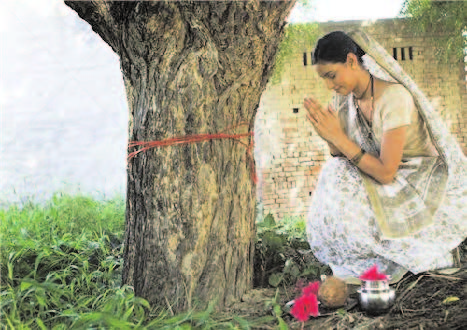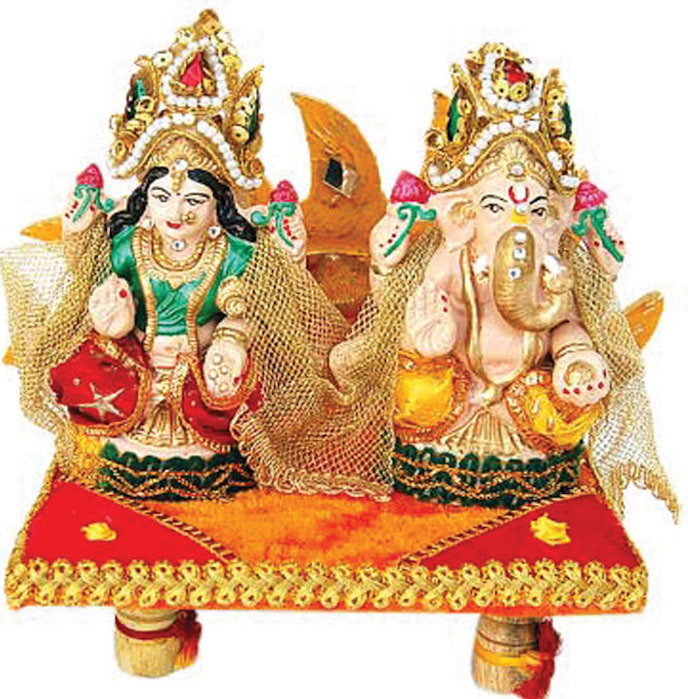
Trees being nature’s major processors of solar energy which is vital for our existence, and yielding flowers, fruit, wood or medicine, have been worshipped by the Hindus as a matter of gratitude. Manu believed that they were conscious like humans and felt pleasure and pain. Indian sages and seers eulogized asvattha or peepal (Ficus religiosa), gular (Ficus glomerata), neem (Azadirachta indica), bel (Aegle marmelos, bargad or banyan (Ficus bengalensis), Asoka (Sereca indica), amala (Phyllanthus emblica), Arjuna (Terminalia Arjuna) and many other trees which acquired social and religious sanctity with the passage of time.
Bel, rudraksa (seeds of Elaeccarpus) and ber (Zizyphus jujuba) are considered dear to Lord Siva, sala (Shorea robusta) and pipal to Lord Visnu; kadamba (Anthocephalus cadamba) to Lord Krsna; mango (Mangifera indica) to Lord Hanuman, asoka to Kamadeva; silk cotton (Bombax malabaricum) to the goddess Laksmi; and coconut or sriphala (Cocos nucifera) to Varuna or the lord of waters, and to many other gods and goddesses.
The five trees (panca-vrksa) which adorn Lord Indra’s garden (Nandana) in his paradise (Svarga) are: (1) mandara (Erythrina stricta) with scarlet flowers in horizontal clusters at the ends of branches; its shade relieves one of physical ailments and mental stress; parijata (Nyctanthes arbor-tristis) with bark of gold, leaves of copper color, and fragrant, rejuvenate fruit; it arose out of the ocean of milk and was taken away by Indra to his paradise from where it was brought to Dvaraka by Lord Krsna at the instance of his wife Satyabhama. After the passing away of the Lord and the submerging of Dvaraka in the ocean, it was taken back to heaven; samtanaka, a tree of wonder having leaves which promote fertility in men; its identification remains obscure; haricandana or sandalwood (Santalum album) well known for its fragrance and cooling effect, it keeps evil spirits at bay; and kalpa vrksa or kalpa taru, the tree of eternity which emerged as a result of the churning of the ocean of milk; it was lifted to Svarga by Indra, and is frequently mentioned in Sanskrit literature for its wish-fulfilling quality.
The Pauranic lore has it that Brahma metamorphosed into a palasa, Visnu into a pipal and Rudra into a bargad after being cursed by Parvati, the wife of Lord Siva. Neem is customarily believed to be the abode of the goddess Sitala; pipal of the goddess Laksmi (on Sundays), amala of both lord Visnu and Lord Siva, and Sami (Ficus benjamina) of Lord Hanuman, the son of the wind-god. Deodar (Polylathis longifolia) is believed to be the adopted child of Lord Siva. Pipal is said to form a link between earth and heaven. The flowers of five trees-asoka, mango, navamal lika (Ixora parviflora), pink lotus (Nelumbe nucifera) and blue lotus (Nymphae stel-lata) adorn the tip of the bow of Kama, the god of love. Kadamba reminds one of Lord Krsna’s flute and bargad of Lord Siva’s matted hair which reflect in the tangled roots of the tree.





Be the first to comment